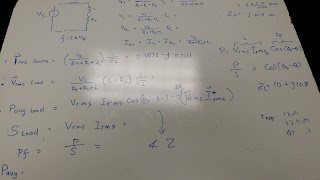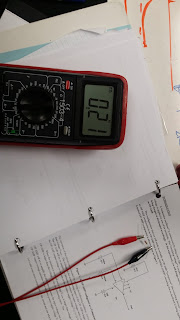FM Transmitter
For our final project, we decided to create a FM transmitter with a microphone input, which would allow us to create a pirate radio station.
Our initial design was to make it compact enough to fit into altoid box.
Initial sketch:
Our schematics for the circuit:
Our first prototype in the breadboard:
our prototype has the microphone with amplifier as opposed to a regular electret microphone input that we used as our final design. Although this microphone allows us to get voice from longer distance from the mic compared to the regular electret microphone, the component itself is about 3 times the price of our circuit itself, which will increase our production cost by 400% while only increasing the range by only a little bit. We decided that the cost outweigh the benefit, and decided to use a regular electret microphone instet.
At the testing stage, we met with a couple difficulty, such as:
- trying to debug why our circuit did not work, when it was actually working but our radio was just not good enough to recieve signal (we initially used fm radio app that comes with our phone, and it will lose the signal just by orienting it differently).
- when we used waveform to test the circuit, there were 2 frequencies where the signal could be heard. One is at the 90MHz range, which comes from the analog discovery box, and another is at the 80-90MHz range, which comes from the circuit. We spent a lot of time trying to figure out why our trimmer capacitor did not change the frequency, but it turns out it was because we were tuning to the analog discovery signal.
- We did not have a nonconductive screwdriver, which make our circuit to change frequency just as we take off our screwdriver off the trimmer capacitor, which was not great. We later tried to resolve it by plasti-dipping our screwdriver, which helps the tuning process easier because it is nonconductive(ish).
- noises in our broadcast. This happened when we used too much gain in the microphone or when our media player is at a high volume (when using a 3.5 mm audio jack input).
We also created a prototype with a 3.5 mm audio jack input as aforementioned:
Also, using Perfboard as opposed to the breadboard make our broadcast to be clearer by quite a bit.
Our final design:
Our microphone input:
We added a solid wire as a structural support to our antenna because we found that by twisting the antenna differently, we will change the frequency of our broadcast, which we found to be non-ideal.
If we were to have more time, we would switcch our input to two jumper wires instead, so that we could hook it up to a mini breadboard that has different inputs ( mic or audio jack), which would allow for easily swappable input, which will make our design more versatile.





























